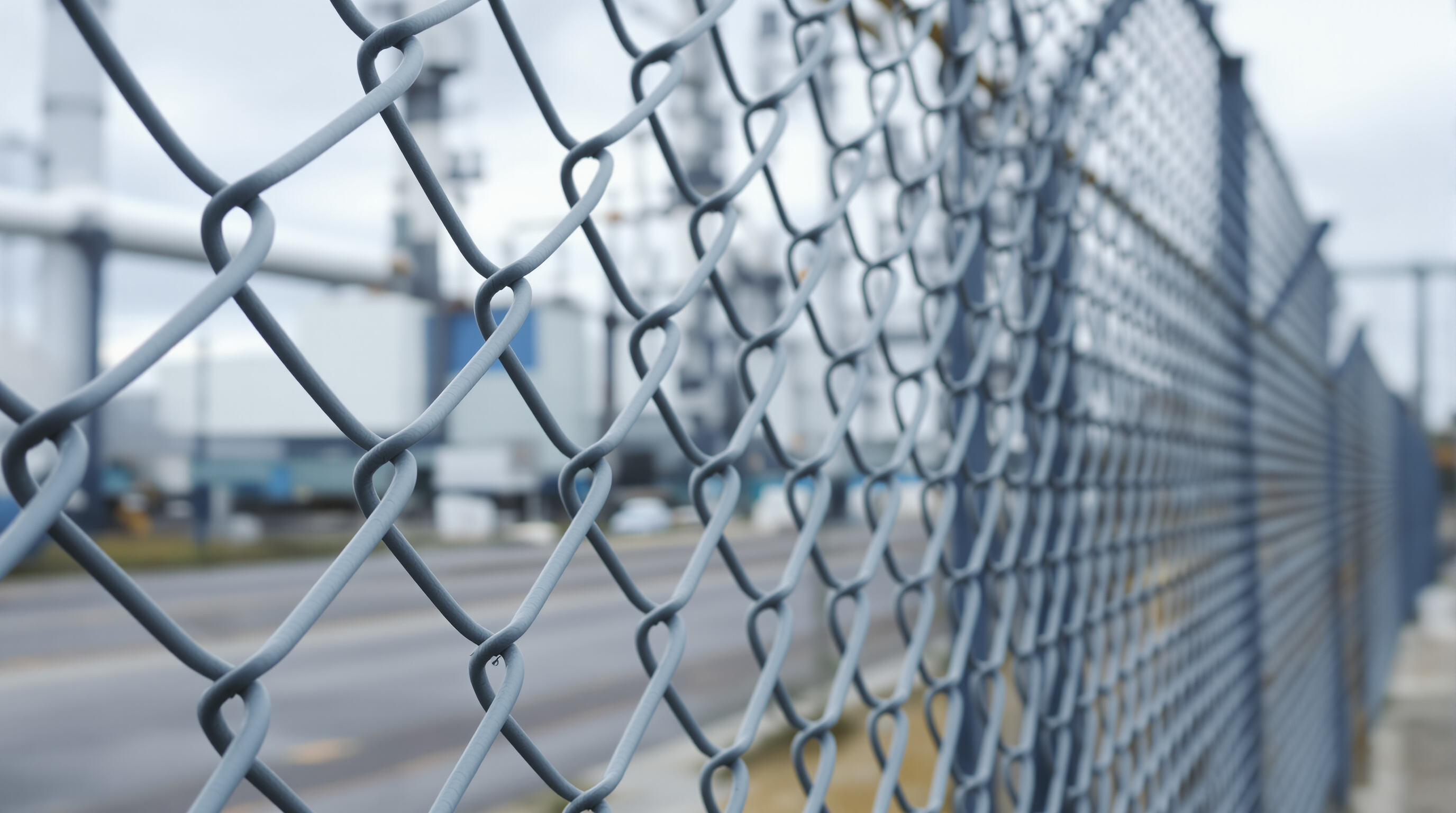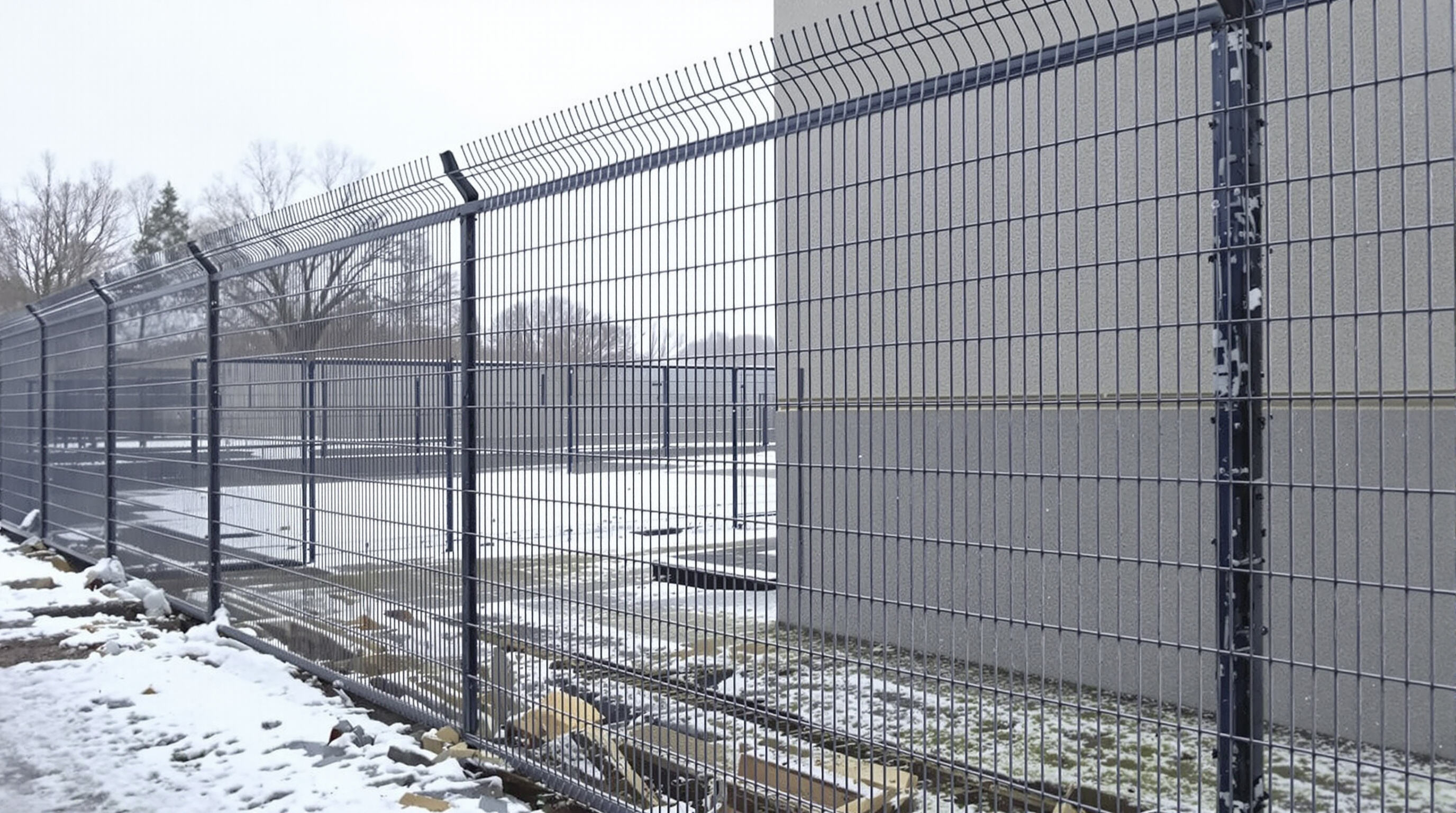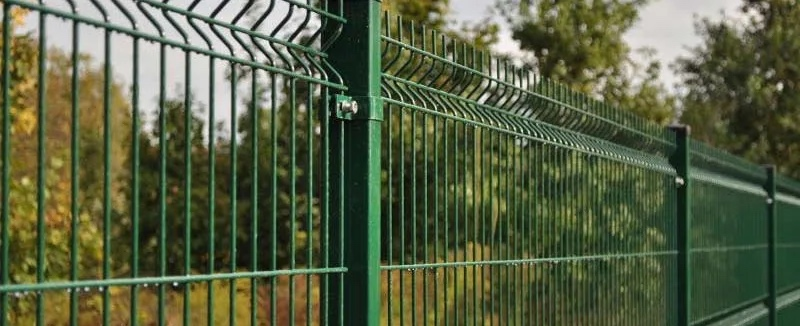Understanding the 3D Weld Mesh Fence Structure and Design

How 3D Welding Enhances Structural Integrity
What makes 3D weld mesh fencing so strong is how it actually works. Steel wires get fused together at each point where they cross, creating something pretty solid and three dimensional in structure. The whole thing includes those V shaped supports too, which spread out any force applied against the fence across the whole panel. That means when something hits it hard, the stress gets distributed instead of focusing on one spot. Tests have shown these fences can handle around 500 pounds of pressure without bending or breaking, which beats regular welded mesh by almost three times. Because there are no gaps between the welds, there's nowhere for someone to cut through or apply leverage. Even winds blowing at speeds above 125 miles per hour won't damage them much. Plus, the continuous diamond pattern doesn't leave places where climbers could find purchase, making it really tough for anyone trying to scale over.
Design Specifications for Optimal 3D Mesh Configuration
High-security performance depends on precise engineering parameters that optimize strength and visibility. Key specifications include:
| Parameter | Security Grade | Standard Application |
|---|---|---|
| Wire Diameter | 5mm-6mm | Critical Infrastructure |
| Mesh Opening | 76.2x12.7mm | Anti-climb barrier |
| Beam Frequency | Every 200mm | Impact reinforcement |
| Height Options | 1.8m-6m | Site-specific needs |
These dimensions create angles greater than 60°, which naturally deflect climbers while maintaining over 80% visibility. The vertical load-bearing beams are cold-formed using CNC technology, ensuring consistent geometry and eliminating structural fatigue points common in manually fabricated systems.
Evolution from Chain-Link to 3D Weld Mesh Systems
Regular chain link fences just aren't holding up anymore against determined intruders. A simple cut can open up gaps around 30 centimeters wide, which completely undermines any attempt at securing property boundaries. That's why many security professionals are turning to 3D welded mesh instead. This newer technology creates panels where every part works together as one solid surface because all the components are continuously welded together. Today's security fencing systems actually meet SR1 standards thanks to special design features like extra strong vertical wires placed exactly where stress tends to build up most. These kinds of improvements simply weren't possible with traditional chain link fencing that relies on those looped wire connections. We're seeing real results too - government regulations for critical infrastructure like power plants and border checkpoints now mandate this type of fencing. After switching from old style fencing, one major facility reported cutting down on break ins by about three quarters within just a few months of installation.
Superior Security Features of 3D Weld Mesh Fence
Resistance to Cutting, Climbing, and Impact
What makes 3D weld mesh so effective is its completely interconnected steel structure that creates a solid wall without any vulnerable spots. At every diamond shaped intersection, there are strong welds holding everything together. Trying to cut through even one of those 4 to 6mm hardened wires takes serious time and effort with bolt cutters – we're talking over five whole minutes just for a single point. The way the mesh angles at around 65 degrees also means there's nowhere for someone to get a good grip when trying to climb over it. When put through actual crash testing scenarios, this mesh proved itself much tougher than regular chain link fences. It handled impacts from vehicles going as fast as 90 kilometers per hour while showing only minimal damage compared to other options on the market today.
Integration with SR1 Rated Twin-Wire Mesh for High-Security Zones
Critical infrastructure locations often pair 3D mesh fencing with SR1 rated twin wire systems to build multiple layers of security around sensitive areas. What makes this setup effective is the parallel arrangement of steel wires which basically doubles the resistance against cutting attempts while still meeting those tough SR1 standards. These systems can actually hold up against plasma torch attacks for three whole minutes straight. Another big plus is how the mesh doesn't interfere with existing security tech. It works right alongside perimeter intrusion detectors and infrared sensors without messing with their signals, so surveillance stays strong across the board. Many facility managers find this combination gives them better coverage than trying to rely on just one type of barrier system.
Applications in Government, Military, and Critical Infrastructure
The fence has really taken off at border checkpoints lately. We're seeing about 65 percent more locations using 3D weld mesh these days, even where temperatures can get pretty brutal. For military bases fighting real battles on the ground, there haven't been any successful break ins during their two year tests so far. Power stations love how they can see everything around them and nobody tampers with the equipment anymore. Prisons that switched to this system saw something amazing happen too escape attempts dropped by roughly 80% once they upgraded their old fences. Across America, water treatment centers are putting up these fences as protection against people trying to mess with their systems. Some recent research from infrastructure labs back this up too looking at 2023 numbers, vandalism just plummeted compared to before.
| Feature | Chain-Link Performance | 3D Mesh Improvement |
|---|---|---|
| Cutting Resistance | 4-minute breach | 15+ minutes |
| Impact Strength | 45 km/h vehicle impact | 90 km/h resistance |
| Vandalism Rate | 22 incidents/year | 0.8 incidents/year |
Despite higher initial costs, installation time remains comparable to traditional systems, and the modular design supports future upgrades such as anti-drone netting.
Material Durability and Environmental Resistance

Galvanized and Powder-Coated Protection for Long-Term Performance
The 3D weld mesh gets protection through hot dip galvanization first, which applies a zinc layer that actually sacrifices itself to stop rust from getting through even if there are scratches. After this comes a factory applied powder coating that acts as a tough barrier against things like abrasion and weather damage. When combined, these protective layers seem to keep the material going for over 25 years based on what corrosion studies from last year showed. People working in the field have reported about 60 percent fewer problems needing maintenance than what they see with fencing that only has one type of coating applied.
Corrosion and Weather Resistance in Harsh Conditions
Built to handle harsh conditions, 3D weld mesh works great across temperature extremes from minus 40 degrees Fahrenheit all the way up to 140 degrees Fahrenheit. It stands up well against salt spray, acid rain, and long term exposure to sunlight too. The way it's positioned vertically helps keep snow from piling up on top, and the open mesh pattern stops water from collecting and sitting there. When put through rigorous salt fog tests lasting around 5,000 hours, we found the material loss was under just 0.1 millimeters, which beats regular chain link by a wide margin. Plus, those special UV stabilized coatings really hold their own in desert climates where solar radiation levels often hit 11 or higher on the index scale.
Comparison with 358 Prison Mesh in High-Security Durability
Although 358 prison mesh offers strong cut resistance, long-term durability favors 3D weld mesh:
| Attribute | 358 Prison Mesh | 3D Weld Mesh Fence |
|---|---|---|
| Coastal Corrosion | 12-15 year lifespan | 20+ year lifespan |
| Impact Recovery | Permanent deformation | Spring-back retention |
| Maintenance Frequency | Biannual inspections | Quadrennial checks |
The 3D V-shape provides structural memory, allowing the fence to recover after impact. Independent cyclic loading tests (2024) confirm 38% higher fatigue resistance than flat-panel alternatives.
Advanced Manufacturing Techniques Ensuring Quality and Precision
Robotic Welding and CNC Forming in 3D Mesh Fabrication
When it comes to welding joints, robots deliver consistent penetration throughout each connection point, something that just doesn't happen reliably with manual methods. Combine this with computer numerical control forming technology and we're talking about mesh geometry accuracy within half a millimeter either way. According to manufacturing reports, switching to robotic systems cuts down on defective products by around three quarters, which obviously makes things last longer overall. Panels produced through these automated processes hit all the important performance targets without fail. Take weld shear strength for instance it regularly goes above 1500 megapascals, meaning quality stays rock solid even when producing thousands of units month after month.
Quality Control in ISO-Certified 3D Weld Mesh Production
The manufacturing process sticks strictly to ISO 9001 guidelines, using automated sensors at every step along the way. These sensors check everything from how the wire is made all the way through to measuring the final coating thickness on the product surface. Important numbers such as zinc coating weight need to hit at least 250 grams per square meter, while mesh openings must stay within very tight tolerances. We actually run these checks three times over for good measure. Every 25th panel gets special attention during production audits to confirm it meets those CPSA security standards. This helps track where each component comes from and makes sure we're hitting those tough security requirements customers expect when they specify high security products.
The Role of Smart Factories in Modern Fence Manufacturing
Smart factories powered by IoT technology rely on central control panels that keep an eye on around 30 different aspects of production at once. These systems have gotten really good at spotting when something goes off track, catching changes as small as 0.1% before they become problems. That helps stop machines from breaking down unexpectedly and keeps everything running smoothly day after day. Every single weld mesh component gets its own special code during manufacturing, which lets companies track where each part has been since it was made all the way through to final assembly. All this information makes it much easier to plan maintenance work ahead of time instead of waiting for things to fail. Companies save money in the long run while customers get better quality products because there's clear documentation of what happened throughout the whole manufacturing process.
Economic and Operational Benefits of 3D Weld Mesh Fence
Cost-Benefit Analysis: Long-Term Savings vs. Initial Investment
While 3D weld mesh definitely costs more upfront compared to regular chain link fencing, it actually saves money in the long run. The material doesn't rust easily so there's no need for constant fixing, and really not much maintenance at all except checking it now and then. Over about fifteen years, this means companies spend around sixty to seventy percent less on upkeep. Regular fences usually need replacing somewhere between eight and ten years because they break down, but 3D weld mesh holds up even when things get rough outside. Lab tests have shown this too, though nobody should take those numbers as gospel. All told, the fence lasts longer and ends up costing about forty percent less overall once we factor in everything, even though it does come with a bigger price tag at first.
Reliability During Economic Downturns and Infrastructure Projects
When money gets tight economically speaking, 3D weld mesh stands out for its consistent performance and almost zero unplanned downtime issues. Many big infrastructure jobs choose this system specifically because manufacturers back it with a 30 year service life warranty. That kind of long term reliability helps avoid those nasty budget surprises when unexpected repairs pop up. Both government agencies and industrial sites tend to go for this option since the anti climbing feature actually cuts down on how many guards need to be posted around the perimeter area something like 25%. Plus there's another benefit worth mentioning the modular construction speeds things up quite a bit. Installation takes roughly 15 to 20 days less than traditional concrete barriers do. Makes sense then why so many fast tracked security projects funded through stimulus packages keep picking this solution time after time.
Frequently Asked Questions (FAQs)
What is the strength comparison between 3D mesh and chain-link fences?
3D mesh fencing can withstand around 500 pounds of pressure due to its structural design, making it almost three times stronger than regular chain-link fencing.
Why are 3D weld mesh fences ideal for high-security zones?
3D weld mesh fences integrate well with SR1 rated twin-wire systems, doubling the resistance against cutting attempts and supporting existing security technologies.
How do environmental conditions affect the 3D weld mesh fence?
3D weld mesh is designed to resist harsh environmental conditions, including temperature extremes, salt spray, and acid rain, due to its galvanized and powder-coated protection.
Are 3D weld mesh fences cost-effective in the long run?
Despite higher initial costs, 3D weld mesh fences save money in the long term due to reduced maintenance and longer lifespan compared to traditional fencing options.
Table of Contents
- Understanding the 3D Weld Mesh Fence Structure and Design
- Superior Security Features of 3D Weld Mesh Fence
- Material Durability and Environmental Resistance
- Advanced Manufacturing Techniques Ensuring Quality and Precision
- Economic and Operational Benefits of 3D Weld Mesh Fence
- Frequently Asked Questions (FAQs)
 EN
EN

